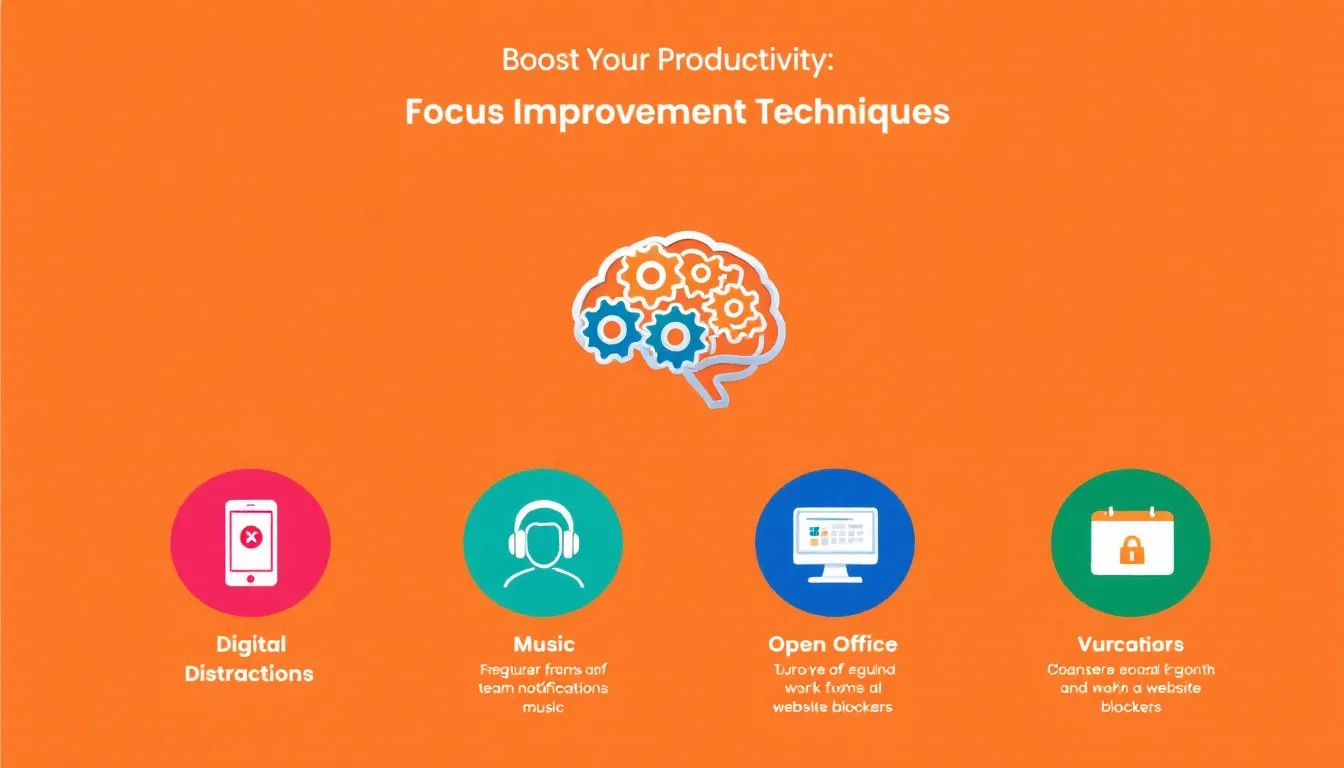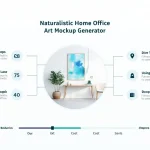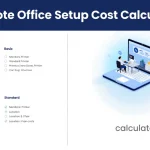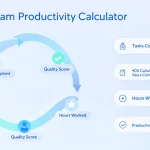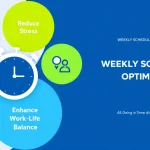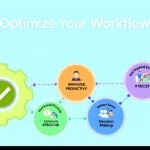Focus Improvement Techniques
Processing your request...
Is this tool helpful?
How to Use the Focus Improvement Techniques Generator Effectively
To make the most of our Focus Improvement Techniques Generator, follow these simple steps:
- Describe your work environment: In the first field, provide a detailed description of your typical work setting. For example, you might enter “Open-plan office with 20 colleagues” or “Home office in a shared apartment.”
- List your typical distractions: In the second field, enumerate the common distractions you face during work hours. For instance, you could input “Constant notifications, chatty coworkers, and irregular meal times” or “Social media, household chores, and family interruptions.”
- Generate techniques: Click the “Get Focus Improvement Techniques” button to receive personalized suggestions based on your input.
- Review and implement: Carefully read through the generated techniques and consider how you can incorporate them into your daily routine.
- Copy results: Use the “Copy to Clipboard” button to easily save or share the suggested techniques.
By providing accurate and specific information about your work environment and distractions, you’ll receive more tailored and effective focus improvement techniques.
Unlocking Your Productivity Potential: The Focus Improvement Techniques Generator
In today’s fast-paced, hyper-connected world, maintaining focus and productivity can be a significant challenge. The Focus Improvement Techniques Generator is a powerful tool designed to help individuals overcome distractions and maximize their efficiency during work hours. By analyzing your specific work environment and common distractions, this innovative tool provides personalized, actionable strategies to enhance your concentration and boost your productivity.
Whether you’re a busy professional working in a bustling office, a remote worker struggling with home-based distractions, or a student trying to optimize your study sessions, this generator offers tailored solutions to meet your unique needs. By leveraging research-backed techniques and adapting them to your specific circumstances, you can transform your work habits and achieve new levels of focus and productivity.
The Science Behind Focus and Productivity
To fully appreciate the value of the Focus Improvement Techniques Generator, it’s essential to understand the science behind focus and productivity. Cognitive science and psychology have made significant strides in understanding how our brains function and what factors influence our ability to concentrate and perform tasks efficiently.
The Cognitive Load Theory
One crucial concept in understanding focus is the Cognitive Load Theory, developed by John Sweller. This theory suggests that our working memory has a limited capacity for processing information. When we’re bombarded with distractions or trying to multitask, we quickly reach cognitive overload, leading to decreased performance and increased errors.
The Focus Improvement Techniques Generator takes this into account by suggesting strategies that help manage cognitive load, allowing you to allocate your mental resources more effectively.
The Pomodoro Technique and Time Management
Another influential concept in productivity is the Pomodoro Technique, created by Francesco Cirillo. This time management method involves working in focused 25-minute intervals (called “Pomodoros”), followed by short breaks. This approach aligns with our brain’s natural attention span and helps maintain high levels of focus throughout the day.
Many of the techniques suggested by our generator incorporate elements of the Pomodoro Technique or similar time-blocking strategies, adapted to your specific work environment and distractions.
Benefits of Using the Focus Improvement Techniques Generator
Incorporating the Focus Improvement Techniques Generator into your work routine can yield numerous benefits:
- Personalized strategies: Unlike generic productivity advice, this tool provides techniques tailored to your specific work environment and distractions.
- Increased productivity: By implementing the suggested techniques, you can accomplish more in less time, leading to improved overall productivity.
- Enhanced focus: Learn how to minimize distractions and maintain concentration for extended periods.
- Reduced stress: As you become more efficient and focused, you’ll experience less work-related stress and anxiety.
- Improved work-life balance: By maximizing your productivity during work hours, you can free up more time for personal activities and relaxation.
- Adaptability: As your work environment or typical distractions change, you can generate new techniques to stay on top of your game.
- Continuous improvement: Regularly using the generator encourages ongoing reflection on your work habits and fosters a mindset of continuous improvement.
Addressing User Needs and Solving Specific Problems
The Focus Improvement Techniques Generator is designed to address a wide range of productivity challenges faced by modern workers. Let’s explore how it tackles some common issues:
Combating Digital Distractions
In our hyper-connected world, digital distractions are a significant productivity killer. For a user who inputs “Constant email notifications and social media temptations” as their typical distractions, the generator might suggest techniques such as:
- Installing website blockers to limit access to social media during work hours
- Setting up designated email checking times and disabling notifications outside of these periods
- Using the “Do Not Disturb” mode on devices during focused work sessions
- Implementing a digital detox routine before and after work to create clear boundaries
Optimizing Open Office Environments
For someone working in a “Bustling open-plan office with frequent impromptu meetings,” the generator could recommend:
- Using noise-canceling headphones to create a personal audio environment
- Establishing a visual “do not disturb” signal (e.g., a small flag or sign) to indicate focused work periods
- Negotiating “quiet hours” with colleagues for uninterrupted work time
- Utilizing meeting pods or quiet spaces for tasks requiring deep concentration
Enhancing Remote Work Focus
Remote workers facing challenges like “Home-based distractions and lack of structure” might receive suggestions such as:
- Creating a dedicated workspace separate from living areas
- Establishing a consistent daily routine to signal the start and end of work hours
- Using time-blocking techniques to structure the workday and maintain focus
- Implementing virtual co-working sessions with colleagues to boost accountability
Practical Applications and Use Cases
The Focus Improvement Techniques Generator can be applied in various professional and academic settings. Here are some examples of how different users might benefit from the tool:
Case Study 1: The Multitasking Manager
Sarah, a marketing manager, struggles with juggling multiple projects and constant interruptions. Her input to the generator:
- Work environment: “Private office with frequent team check-ins”
- Typical distractions: “Constant project switches, impromptu meetings, and urgent email requests”
Based on this input, the generator might suggest:
- Implementing a priority matrix to categorize tasks by urgency and importance
- Scheduling focused work blocks for high-priority tasks and communicating these to the team
- Using the “Two-Minute Rule” for quick tasks to prevent them from piling up
- Setting up an “office hours” system for team members to consolidate check-ins and reduce interruptions
By applying these techniques, Sarah could significantly improve her ability to manage multiple projects while maintaining focus on critical tasks.
Case Study 2: The Distracted Student
Alex, a college student, finds it challenging to concentrate on studying in his shared dormitory. His input:
- Work environment: “Shared dorm room with noisy roommates”
- Typical distractions: “Social media, video games, and frequent invitations to socialize”
The generator might provide the following suggestions:
- Utilizing the library or quiet study spaces on campus for focused study sessions
- Implementing the Pomodoro Technique with 25-minute study intervals and 5-minute breaks
- Using website blockers to limit access to social media and gaming sites during study hours
- Creating a study schedule and sharing it with roommates to establish quiet times in the dorm
These strategies could help Alex create a more conducive study environment and improve his academic performance.
Case Study 3: The Remote Freelancer
Emma, a freelance graphic designer, struggles with maintaining a structured workday at home. Her input:
- Work environment: “Home office in a small apartment”
- Typical distractions: “Irregular sleep patterns, household chores, and lack of boundaries between work and personal time”
The generator might recommend:
- Establishing a consistent sleep schedule and morning routine to signal the start of the workday
- Using time-blocking to allocate specific periods for client work, administrative tasks, and personal activities
- Implementing a “shut down” ritual at the end of each workday to create clear boundaries
- Batching household chores and scheduling them outside of prime working hours
By implementing these techniques, Emma could create a more structured and productive work environment, even within the confines of her small apartment.
Frequently Asked Questions (FAQ)
Q1: How often should I use the Focus Improvement Techniques Generator?
A1: It’s recommended to use the generator whenever you experience significant changes in your work environment or face new types of distractions. Additionally, revisiting the tool every few months can help you refine your focus strategies and discover new techniques as your work habits evolve.
Q2: Can I use the suggested techniques for non-work-related tasks?
A2: Absolutely! While the generator is primarily designed for work-related focus improvement, many of the suggested techniques can be adapted for other activities requiring concentration, such as studying, creative projects, or personal development tasks.
Q3: What if I’m not seeing immediate improvements after implementing the suggested techniques?
A3: Developing new habits and improving focus takes time and consistent effort. Give yourself at least 2-3 weeks to adapt to new techniques before evaluating their effectiveness. If you’re still struggling, try generating new suggestions or combining different techniques to find what works best for you.
Q4: Are the suggested techniques backed by scientific research?
A4: Yes, the Focus Improvement Techniques Generator draws from a wide range of scientifically-supported productivity and focus enhancement methods. However, individual results may vary, and it’s important to find the techniques that work best for your unique situation.
Q5: Can I use this tool for team productivity improvement?
A5: While the generator is designed for individual use, managers or team leaders can encourage team members to use the tool individually and then share their experiences. This can lead to valuable discussions about productivity and help create a more focused team environment.
Q6: How does the generator account for different work styles or personality types?
A6: The generator considers your specific work environment and typical distractions to provide tailored suggestions. While it doesn’t explicitly account for personality types, the variety of techniques suggested allows users to gravitate towards methods that align with their personal preferences and work styles.
Q7: Is it possible to combine multiple techniques suggested by the generator?
A7: Absolutely! In fact, combining complementary techniques can often lead to even greater focus and productivity improvements. Feel free to experiment with different combinations to find the optimal approach for your needs.
Q8: How can I track the effectiveness of the suggested techniques?
A8: Consider keeping a productivity journal or using time-tracking apps to monitor your focus and output before and after implementing new techniques. This will help you quantify improvements and identify which methods are most effective for you.
Q9: Can the Focus Improvement Techniques Generator help with procrastination?
A9: Yes, many of the suggested techniques can be particularly helpful in combating procrastination. By breaking tasks into manageable chunks, creating structured work periods, and minimizing distractions, you can overcome the tendency to put off important tasks.
Q10: How does the generator differ from generic productivity advice?
A10: Unlike generic advice, the Focus Improvement Techniques Generator provides personalized suggestions based on your specific work environment and distractions. This tailored approach increases the likelihood of finding effective strategies that work for your unique situation.
By leveraging the power of the Focus Improvement Techniques Generator and consistently applying the suggested methods, you can transform your work habits, enhance your concentration, and achieve new levels of productivity. Remember that improving focus is an ongoing process, and with persistence and the right tools, you can overcome distractions and unlock your full potential in any work environment.
Important Disclaimer
The calculations, results, and content provided by our tools are not guaranteed to be accurate, complete, or reliable. Users are responsible for verifying and interpreting the results. Our content and tools may contain errors, biases, or inconsistencies. We reserve the right to save inputs and outputs from our tools for the purposes of error debugging, bias identification, and performance improvement. External companies providing AI models used in our tools may also save and process data in accordance with their own policies. By using our tools, you consent to this data collection and processing. We reserve the right to limit the usage of our tools based on current usability factors. By using our tools, you acknowledge that you have read, understood, and agreed to this disclaimer. You accept the inherent risks and limitations associated with the use of our tools and services.
